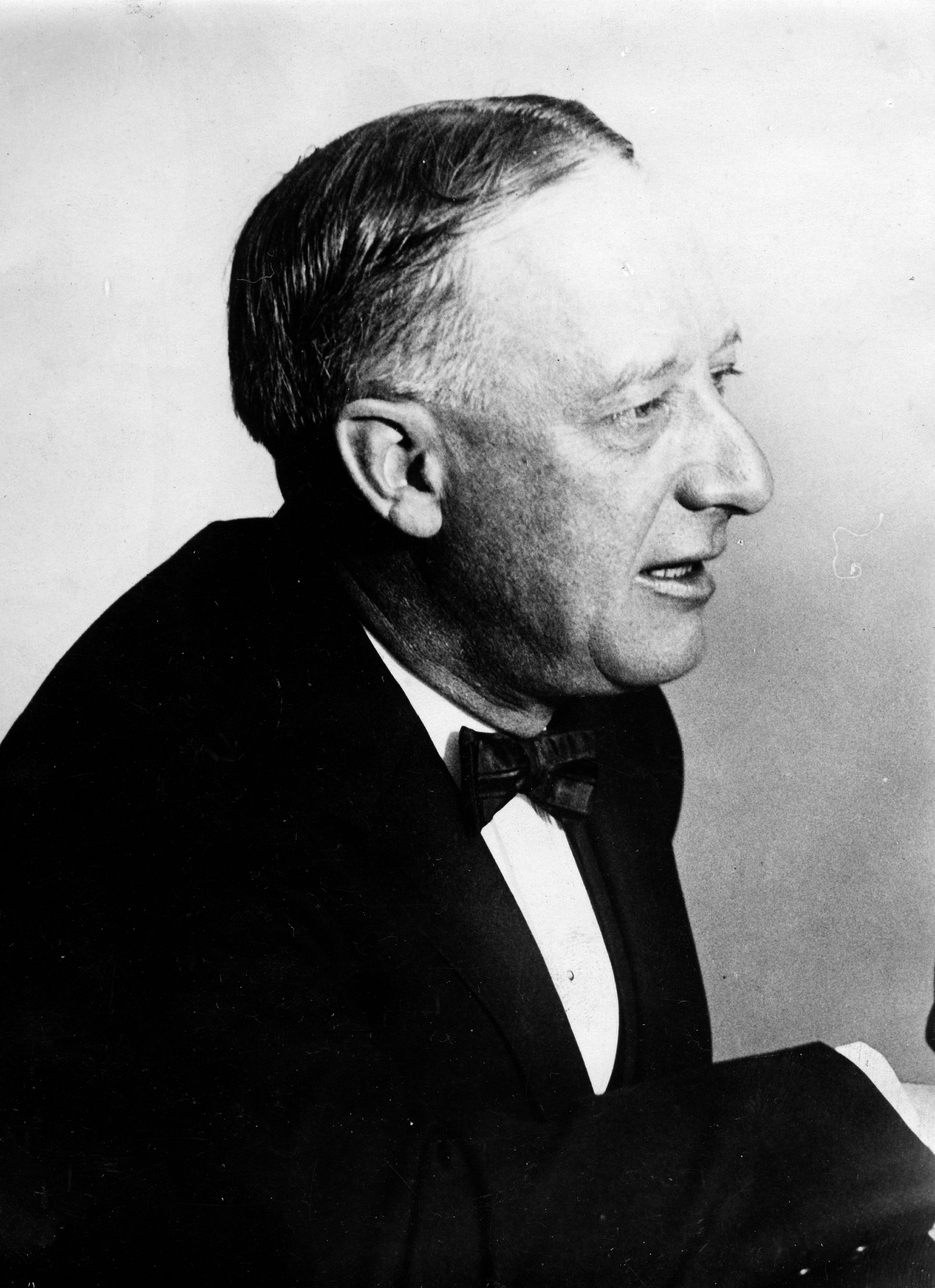
After Donald Trump and Hillary Clinton gave speeches that danced on the razor edge of good spirit at Thursday night’s annual Alfred E. Smith Memorial Foundation Dinner, Smith’s name is all over the news.
But who was he?
Trump’s poorly landed joke about Clinton “pretending not to hate Catholics,” which drew boos from the crowd, points to a key fact about the man and why he is honored with such an event: Smith was the first Catholic presidential candidate of a major party, at a time when distrust of Catholics was widespread in the United States. He made a career in spite of prejudice, becoming a strong symbol of religious freedom.
Smith’s public and political life began in the New York State legislature; he was elected at age 30, having never left New York City. He made a name for himself fighting for a state labor code after a deadly sweatshop fire in 1911. He then became speaker of the Assembly, and then was elected governor of New York in 1918.
“By now he was a shrewd, blunt, humorous campaigner, with an unequaled knowledge of the state’s affairs,” TIME wrote in Smith’s 1944 obituary, of his ascension to the governorship. “He was also a great legislative technician with an uncanny ability to rasp out simple, pointed explanations of complicated governmental problems. He battled for slum clearance, set up children’s courts, got additional millions for teachers’ salaries. He wanted people to enjoy themselves—he took the ban off Sunday baseball. He was greying, heavier, and a meticulous dresser. There was always a knife-edged crease in his trousers and his shoes glittered. He said: ‘I feel spiffy when I’m dressed just right.’ He carried a half-dozen clean handkerchiefs and sprayed himself with eau de cologne.”
Get your history fix in one place: sign up for the weekly TIME History newsletter
In 1924, Franklin Delano Roosevelt—then a delegate to the Democratic convention—put Smith, whom he called “the happy warrior,” in nomination for the presidency. It wasn’t until the next election cycle that Smith actually won the Democratic nomination, becoming the first Catholic candidate of a major party. That wasn’t easy; as TIME noted in the obituary, “He was met by one of the most virulent whispering campaigns in U.S. history. Thousands muttered that he was building a tunnel to connect the White House with the Vatican.”
In 1927, before he was formally nominated for the White House, he decided to respond to those doubts as directly as possible, with an open letter in the Atlantic Monthly. In the letter, he defended the interplay between his faith and political life:
[You] imply that there is conflict between religious loyalty to the Catholic faith and patriotic loyalty to the United States. Everything that has actually happened to me during my long public career leads me to know that no such thing as that is true. I have taken an oath of office in this State 19 times. Each time I swore to defend and maintain the Constitution of the United States. . . . During the years I have discharged these trusts I have been a communicant of the Roman Catholic Church. If there were conflict, I, of all men, could not have escaped it, because I have not been a silent man, but a battler for social and political reform.
…What is this conflict [between Church and State] about which you talk? It may exist in some lands which do not guarantee religious freedom. But in the wildest dreams of your imagination you cannot conjure up a possible conflict between religious principle and political duty in the United States, except on the unthinkable hypothesis that some law were to be passed which violated the common morality of all God-fearing men. And if you can conjure up such a conflict, how would a Protestant resolve it? Obviously by the dictates of his conscience. That is exactly what a Catholic would do.
Needless to say, Smith never made it to the White House. (John F. Kennedy would eventually become the first Catholic President of the United States.) Smith quit politics in 1936, and went on to be Honorary Curator of the Bronx Zoo, president of the Empire State Building and director of multiple corporations.
When Smith died in 1944, 200,000 people went to pay their respects to him while his body was lying in state, and 7,000 more attended the funeral the next day, with 35,000 waiting in the streets outside.
“Millions of Americans, who had almost forgotten Al Smith the politician, remembered him as a symbol of a wonderful era—the years of the never-ending bull market, of the hip flask, of F. Scott Fitzgerald and the Dempsey fights,” TIME wrote. “Al Smith’s hoarse and genial East Side voice, his chewed cigar, his violent pajamas.”
The Alfred E. Smith Memorial Dinner was founded in 1945, the year after Smith’s death. It benefits Catholic charities, and is usually the last event where presidential candidates appear together before the election.
More Must-Reads from TIME
- Cybersecurity Experts Are Sounding the Alarm on DOGE
- Meet the 2025 Women of the Year
- The Harsh Truth About Disability Inclusion
- Why Do More Young Adults Have Cancer?
- Colman Domingo Leads With Radical Love
- How to Get Better at Doing Things Alone
- Michelle Zauner Stares Down the Darkness
Write to Tessa Berenson Rogers at tessa.Rogers@time.com